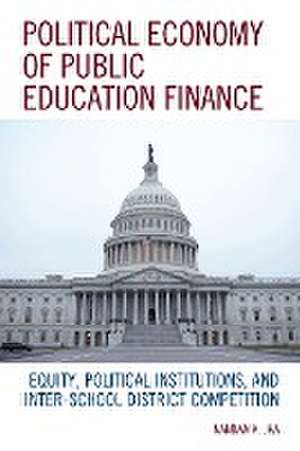Political Economy of Public Education Finance
Autor Nandan K Jhaen Limba Engleză Paperback – 10 mai 2022
Preț: 324.28 lei
Nou
Puncte Express: 486
Preț estimativ în valută:
62.05€ • 64.79$ • 51.35£
62.05€ • 64.79$ • 51.35£
Carte tipărită la comandă
Livrare economică 05-19 aprilie
Preluare comenzi: 021 569.72.76
Specificații
ISBN-13: 9781498590723
ISBN-10: 1498590721
Pagini: 142
Dimensiuni: 152 x 229 x 8 mm
Greutate: 0.22 kg
Editura: Lexington Books
ISBN-10: 1498590721
Pagini: 142
Dimensiuni: 152 x 229 x 8 mm
Greutate: 0.22 kg
Editura: Lexington Books
Cuprins
Introduction: Political Economy of Public Education Finance: Equity, Political Institutions, and Inter-School District Competition
Chapter 1: Funding Inequity in Public Education: A Chronicle of the Debates
Chapter 2: Government¿s Role in Addressing Funding Disparities
Chapter 3: The Ubiquitous School Choice in Public Education and Local Political Leadership in the USA
Chapter 4: A Theoretical Consideration of How School Choice and Political Institutions Affect Funding Inequity
Chapter 5: Empirical Examination of How School Choice and Political Institution Affect Funding Inequity
Chapter 6: Conclusions and Policy Implications
Chapter 1: Funding Inequity in Public Education: A Chronicle of the Debates
Chapter 2: Government¿s Role in Addressing Funding Disparities
Chapter 3: The Ubiquitous School Choice in Public Education and Local Political Leadership in the USA
Chapter 4: A Theoretical Consideration of How School Choice and Political Institutions Affect Funding Inequity
Chapter 5: Empirical Examination of How School Choice and Political Institution Affect Funding Inequity
Chapter 6: Conclusions and Policy Implications
